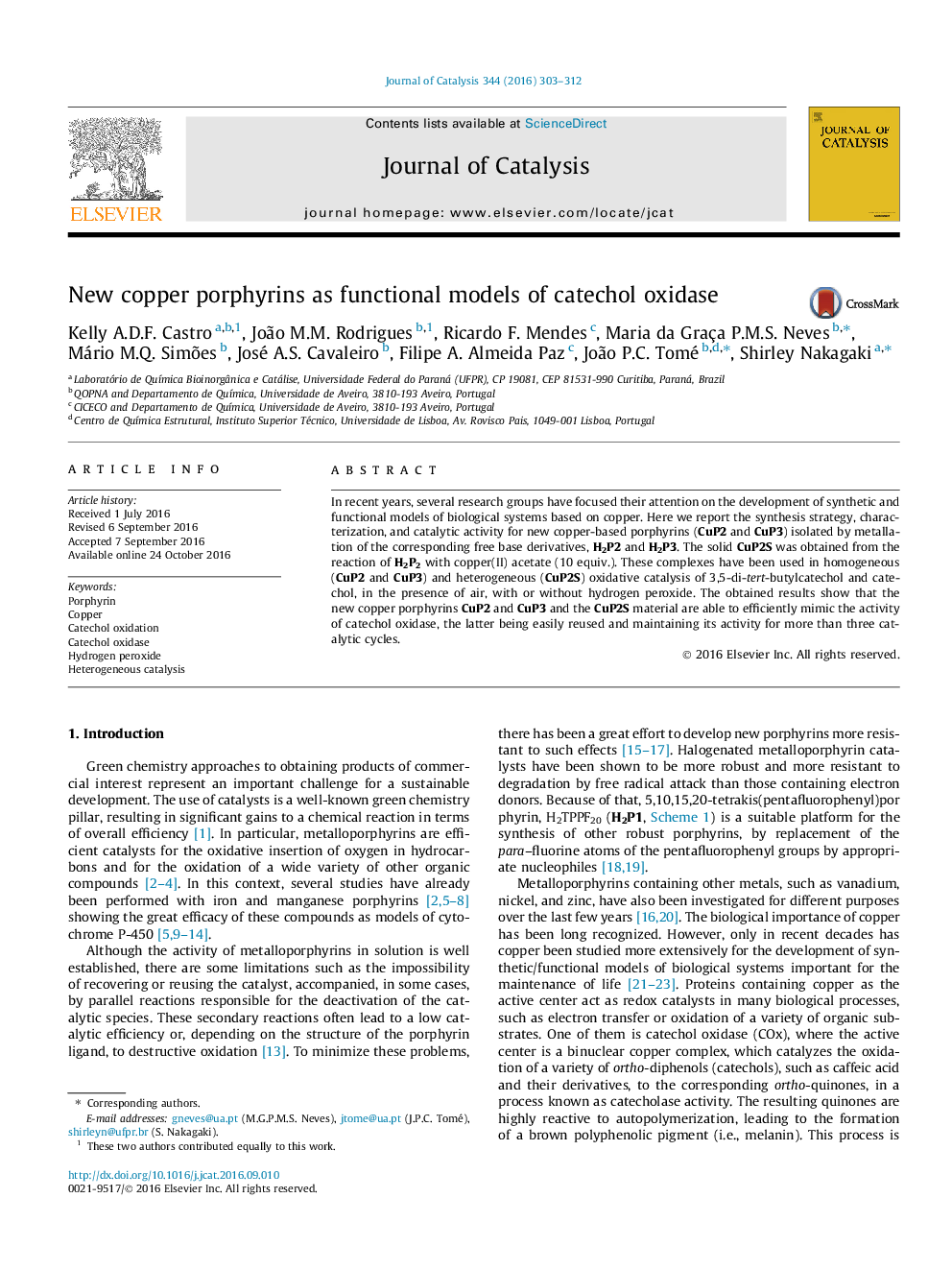| Article ID | Journal | Published Year | Pages | File Type |
|---|---|---|---|---|
| 6455811 | Journal of Catalysis | 2016 | 10 Pages |
•Synthesis and characterization of new copper porphyrins and coordination polymer.•Catechol oxidation in the presence of air or hydrogen peroxide.•Catalysts’ performance depends on the porphyrin structure.•Cu(II) porphyrin is studied by single-crystal X-ray diffraction.•The recyclability capability of heterogeneous catalyst was investigated.
In recent years, several research groups have focused their attention on the development of synthetic and functional models of biological systems based on copper. Here we report the synthesis strategy, characterization, and catalytic activity for new copper-based porphyrins (CuP2 and CuP3) isolated by metallation of the corresponding free base derivatives, H2P2 and H2P3. The solid CuP2S was obtained from the reaction of H2P2 with copper(II) acetate (10 equiv.). These complexes have been used in homogeneous (CuP2 and CuP3) and heterogeneous (CuP2S) oxidative catalysis of 3,5-di-tert-butylcatechol and catechol, in the presence of air, with or without hydrogen peroxide. The obtained results show that the new copper porphyrins CuP2 and CuP3 and the CuP2S material are able to efficiently mimic the activity of catechol oxidase, the latter being easily reused and maintaining its activity for more than three catalytic cycles.
Graphical abstractFigure optionsDownload full-size imageDownload high-quality image (46 K)Download as PowerPoint slide
